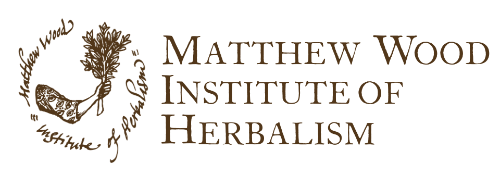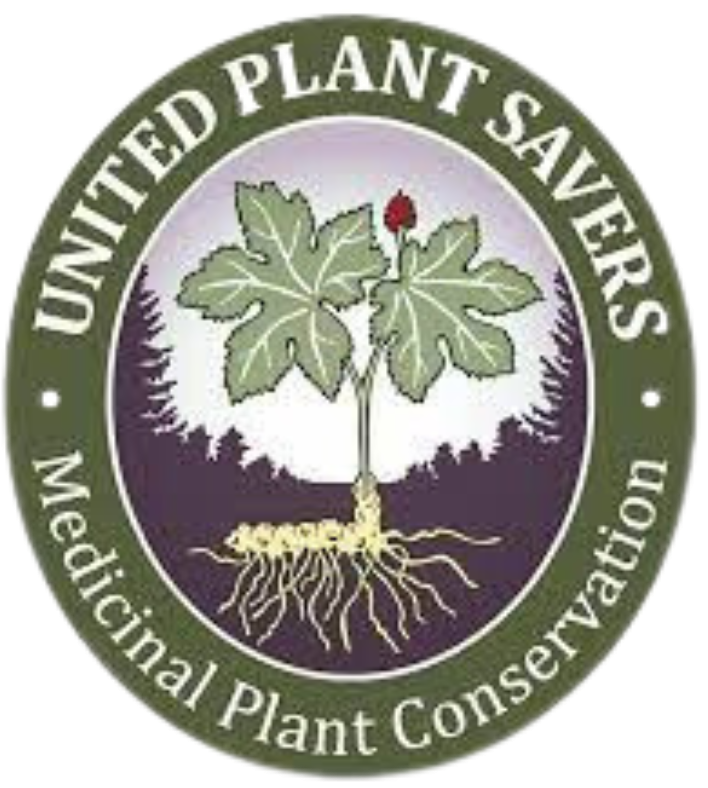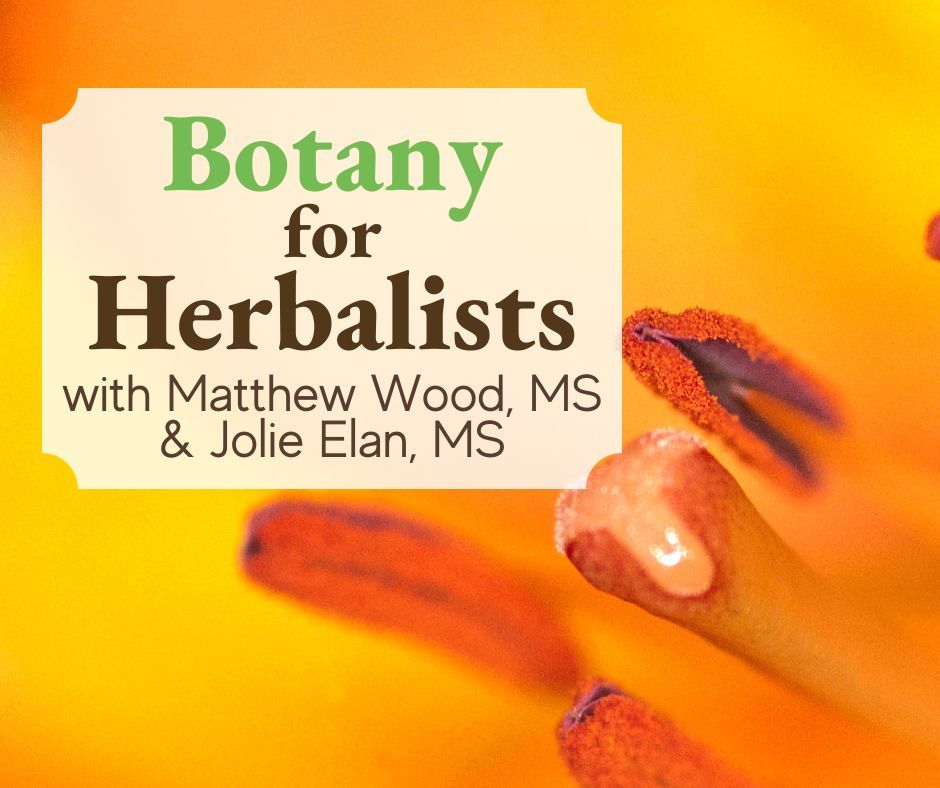
Botany for Herbalists
Plants - Science - Fun
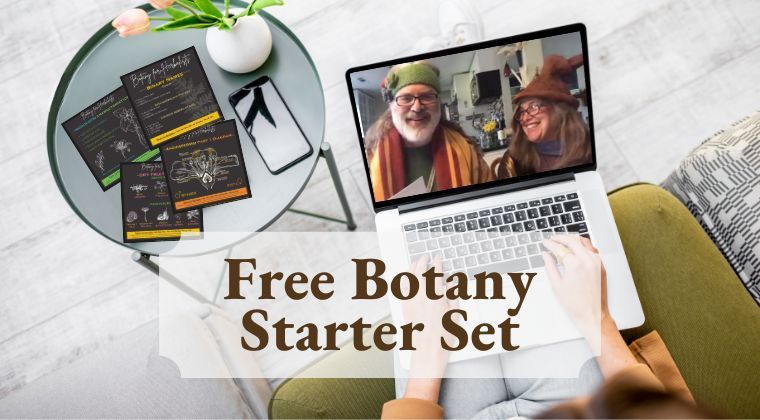
Free Botany Starter Set
Access our 12 botany cards for a quick dip into botanical wonders and enjoy a hilarious and delightful FREE intro to Botany for Herbalists with Matthew Wood and Jolie Elan.
Imagine yourself standing by a trickling creek in the dappled shade...
Why We Created
"Botany for Herbalists"
An herbalist should always feel, in their own home environment, that they can “read the landscape” around them.
We should know that we are part of an ecosystem, with characteristic plants in various mixtures – native, non-native, damper soil, drier soil, disturbed soil, shade-tolerant, sun-tolerant, etc. From the tree to the bush, to the plant, to the soil, we should understand that we are looking at a complete system with its own intelligence. Within that microcosm, we should be able to identify most of the plants we are looking at.
While we can rely on teachers, books, and experience, the infallible method is to learn to look deeply at the sacred geometry of the flower patterns made by the sepals, petals, and male and female reproductive plants. For the most part, plants are classified by their flower patterns into groups, families, genera, and species.
We also need to know the Latin name in order to identify the plant in terms that everyone else can refer to. The science of naming and classifying plants is called Plant Taxonomy.
Many herbs follow the traits of their families and have similar medicinal properties. We might want to substitute a cousin plant with similar properties, or by knowing the family we might get a clue to the possible properties of a new plant we have not seen before. We also must know the three or four poisonous plants that are found in most temperate ecosystems.
Finally, we want to know whether a plant is rare or common in the region where we are and whether it can be sustainably harvested – and how to look that information up, if we don’t immediately know.
When we know all of these bits and pieces of information and can put them together into a whole, then we are ready to pick plants in the wild and teach others about their properties on herb walks and even in the classroom.
-Matthew Wood MS
-Matthew Wood MS
Why an Herbalist Must be a Botanist
Classes Cover
Plant Ecology
We should know that we are part of an ecosystem, with characteristic plants in various mixtures. The plant is inseparable from the soil the water, air, pollinators, birds and of course, us. We are part of the living, sentient ecosystem. Learning plant ecology will ground the herbalist and enable them to think like an ecosystem. "Geez, this plant in the rose family is growing on the edge of a wet meadow helping to dry it out, I wonder if it does the same thing in my body."
Botanical Nomenclature and Taxonomy
We need to know the Latin name in order to identify the plant and converse with others about it. Knowing the scientific name informs us where the plant lies on the family tree; who are its sisters and cousins. The herbalist can start to ask interesting questions like: “I wonder, can I substitute Hound’s Tongue for Comfrey since they are cousins in the same Borage family?”
Evolutionary Botany
We need to know the major plant families to which medicinal herbs belong. This gives us insight into medicinal properties and basic planetary evolution. We want to understand the evolutionary history of plants, in order to understand the relationship between major families.
Plant Communication
We want to fully appreciate plants by understanding the new scientific knowledge about how plants, and plant communities, communicate. This is highly analogous to traditional knowledge based on plant-to-person communication. We want to value both. This class delves into the science of Plant Intelligence.
Herbal Practice
The best practitioner is the one who knows her or his field thoroughly and competently. When we are selecting the correct herbs, we want our minds to naturally slip from one to another, making associations based on medicinal properties, tastes, ecology, botany, correct identity (at the least), safety, and ethical harvesting.
Herbal Education and Communication
We will be better teachers for our students and we will have better communication with our herbal peers.
Ethical Harvesting and Plant Propagation
We want to know if an herb can be sustainably harvested – and how to look that information up, if we don’t immediately know.
Safety
We need to know the poisonous plants that are found in our ecosystem.
Why an Herbalist Must be a Botanist
Includes
Support Materials
Detailed syllabus, reading assignments, online resources, and fun labs.
Support Materials
Watch the free intro & get your free botany starter set!
Video
24.5 hours of teaching
Certificate
Certificate included
(see more below)
This is for you if you...
Upon completion, you will...
Teachers
Matthew Wood, MS
Matthew Wood has been a practicing herbalist for over forty years. He is an internationally known teacher and author with more than ten books to his credit. Matthew has an MSc in herbal medicine from the Scottish School of Herbal Medicine (accredited, U. of Wales). He lives in the Midwest.
Jolie Elan, MS
Jolie Elan, MS, founding director of Go Wild Institute, inspired thousands worldwide, blending science, myth, and spirit for nature awakening. Explore her legacy in acclaimed courses with experts like Susan Leopold, PhD, and Matthew Wood.
Certificate Included
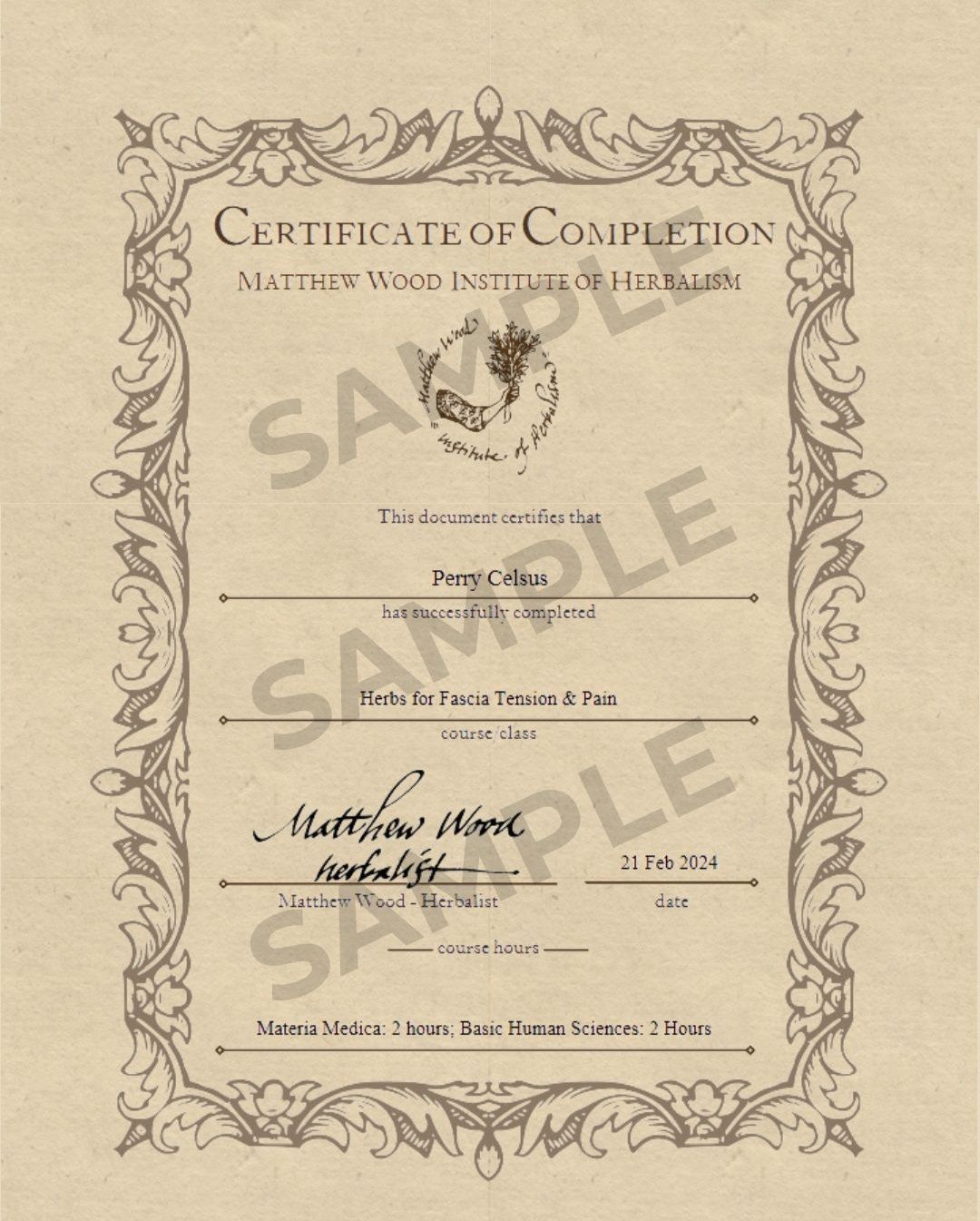
-
How to Get a Certificate
- Complete course materials
- Pass the test with a grade of 70% or better
- Save or print your certificate!
Available with subscription and individual course purchases.
-
Accreditation hours
This course is a total of 36 accredited hours- 3 hours Materia Medica
- 2 hours History, Philosophy, and Therapeutic Paradigms and Applications (Including Energetics) of Various Systems of Herbal Medicine
- 31 hours Botany and Plant Science
*Please check with your accrediting agency whether they will accept accredited hours or certificates from the Matthew Wood Institute of Herbalism
Write your awesome label here.
Botany for Herbalists
A herbalist needs to know the equivalent of anatomy and biology of plants too!
Looking For A DEEPER JOURNEY INTO HERBALISM?
